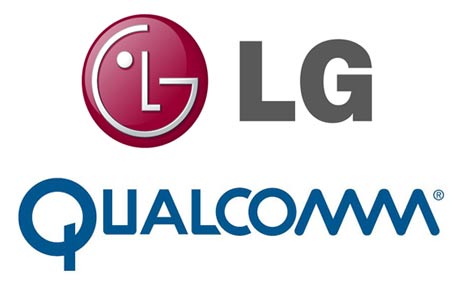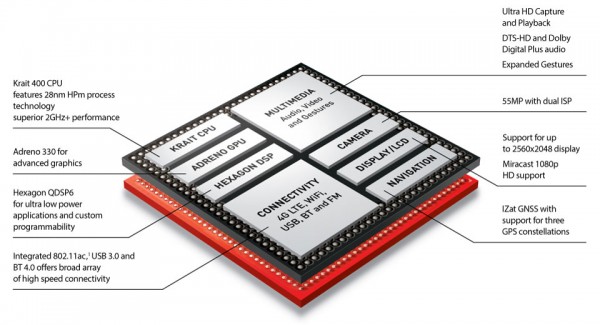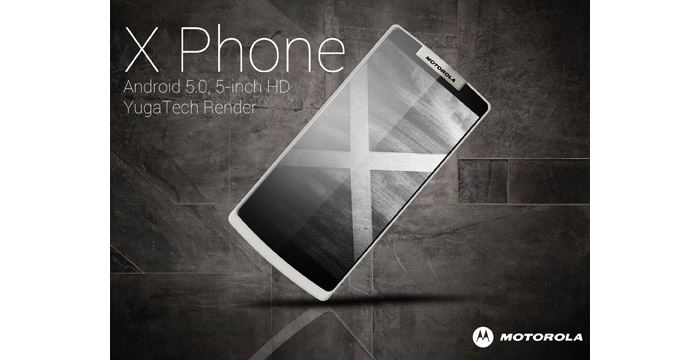Huawei reportedly working on Ascend P6 Nexus edition
Huawei is working on the Nexus edition of its flagship Ascend P6 smartphone, which will run stock Android."We are working with Google to analyse the possibility of bringing out a Huawei Ascend P6 with Google Edition," Pocket-lint has quoted Kevin Ho, president of the handset product division at Huawei, as saying.
Unveiled on June 18 this month, the Huawei Ascen P6 measure mrerely 6.18 mm thick. It has a 5 megapixel front-facing camera, designed for taking "selfies", or pictures of the owner to be shared on social media networks.
Running Android 4.2.2 OS, the smartphone features a 4.7-inch high definition in-cell display and is powered by a 1.5GHz quad-core processor.
Its 8 megapixel rear-facing BSI camera with F2.0 aperture and 4cm macro view also enables 1080p full HD video recording and playback.
It seems that the the top-of-the line smartphones from tech gaints running stock Android is the latest fad, and a young strategy to gain a new market share.
We have already seen the Galaxy S4 and HTC One Nexus editions, and the Internet is abuzz with reports that Sony is also planning to bring the Xperia Z Google edition.
Android 4.3 spotted on Samsung Galaxy S4 Google Play Edition, ROM leaked

Android 4.3 that is yet to be released has leaked from a Google Play edition of the Samsung Galaxy S4. The Google Play Editions of the Samsung Galaxy S4 and the HTC One went on sale in the U.S. few days back. It would not be shipped until 9th July, but some got early access to the device. Sammobile obtained the screenshots that revealed the Galaxy S4 running stock Android 4.3. Later they released the stock ROM of the Android 4.3 for the Snapdragon version of the Galaxy S4 (GT-I9505).
The Android 4.3 with the build number JWR66N in the device is a test build firmware for the Google Play Edition Galaxy S4 (GT-I9505G) which is fully functional Snapdragon-powered Galaxy S4 (GT-I9505), says Sammobile. This doesn’t have any changes from the Android 4.2.2 running on the Google Play Edition Galaxy S4. Flashing this ROM will void your warranty, so try it at your own risk.
This has a new camera app that leaked recently, new live wallpaper , Bluetooth Low Energy support and more that are not available on the Android 4.2.2 (Jelly Bean) that was released for the Nexus devices earlier this year. The Android 4.3 is rumored to roll out for the Nexus devices this July.
Micromax A92 Canvas Lite with 5-inch display, Android 4.1 launched for Rs. 8499
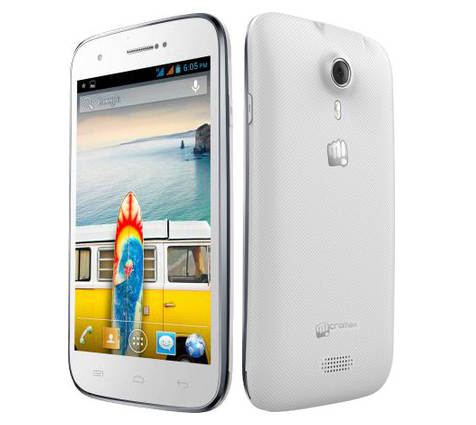
Micromax has officially launched the A92 Canvas Lite that surfaced yesterday. It has a 5-inch (480 x 854 pixels) TFT capacitive touch screen display and is powered by a 1 GHz dual-core processor and runs on Android 4.1 (Jelly Bean). It has a 5-megapixel rear camera with LED flash. It comes with dual SIM support with dual standby similar to other Micromax phones.
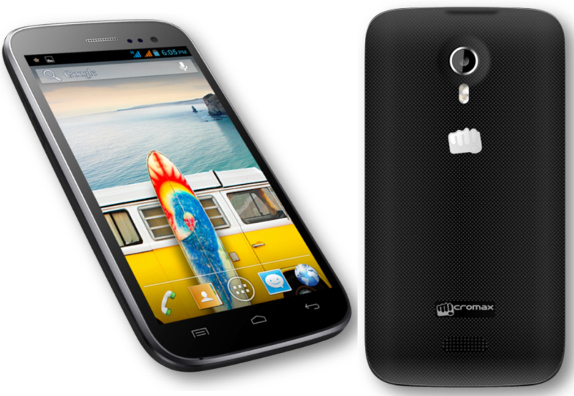
Micromax A92 Canvas Lite Specifications
- 5-inch (480 x 854 pixels) TFT capacitive touch screen IPS display with 196 ppi
- 1 GHz dual-core MediaTek MT6577 processor
- Android 4.1.2 (Jelly Bean) OS
- Dual SIM (GSM + GSM) with Dual Standby
- 10.8 mm thick
- 5MP auto focus camera with LED flash
- 512MB RAM, 4GB internal memory (0.94 GB user memory), 32GB expandable memory with MicroSD
- 3G, Wi-Fi 802.11 b/g/n, Bluetooth 4.0,GPS
- 3.5mm audio jack, FM Radio with Recording
- 2000 mAh battery
Nokia sets up Trade-up program for your used phone in the US
Nokia, in partnership with Clover Wireless, has launched a trade in program for the US. The initiative allows you to give your old smartphone and receive a VISA prepaid card that you can use for purchasing a brand new Nokia Lumia smartphone.
Currently eligible for the discount are the Nokia Lumia 920, Lumia 925 and Lumia 928. You can submit any smartphone to see how much of a financial benefit it'd translate to when purchasing one of the aforementioned Windows Phone 8 smartphones.
The value of a submitted smartphone is determined by Clover Wireless, who has more than 20 years of experience in the resale market and it says it's analyzing the market constantly. The maximum balance you can receive in the VISA prepaid card is $300.
For example, based on its condition, an iPhone 4S is worth up to $250, $210 for a Samsung Galaxy S3 or $250 for an HTC One. After you've determined the cost of your phone using Nokia's specialized webpage (source link below) you send it in the mail with a proof of purchase of your new Nokia Lumia attached. And that's it.What do you think of Nokia's latest attempt at luring in customers in the US? Would you participate in such program if Nokia made it available in your country as well?
5.99 inch AMOLED flexible display coming with the Samsung Galaxy Note 3?

Other rumors have Samsung using both AMOLED and LCD panels with the one used on each unit depending on the market it is offered in. A published report on Friday says that the Samsung Galaxy Note 3 with a flexible display will start production in August and launch in September, possibly during the IFA 2013 show in Berlin.
According to the report, Samsung decided to go with the flexible display for the Samsung Galaxy Note III after demand started fading for the Samsung Galaxy S4. After sales of the handset got off to a great start with 10 million units purchased in the first month, demand for the flagship Android model has apparently dried up. Additionally, reports that LG is close to releasing a phone with a flexible display might have given Samsung the incentive to use a flexible panel for the next generation of its phablet.
First alleged image of the Sony Xperia Honami leaks
Sony's event a couple of days ago brought us the Xperia Z Ultra, but still left only one major phone in the rumor mill – the Sony Xperia i1 Homani. This could be the first image of the device – the OmniBalance design gives away its Xperia Z family allegiance, but the camera positioning doesn’t match any of the official models.The photo allegedly shows the Honami next to the new Xperia Z Ultra and the Xperia ZQ (Brazil's ZL version).

The rumors are that Sony is trying to revive its camera phone business with the Honami, putting in a large 1/1.6" sensor with an impressive 20MP resolution. To be honest the smartphone looks a bit too slim to be able to host such a large sensor, but only time will tell. The Techtudo team who leaked the photos claims they have verified the 20MP resolution, but could not download any photos to publish.
The camera on the Xperia Honami may borrow the BIONZ image processing tech Sony puts on its Alpha DSLRs.
The Honami appears bigger than the ZQ, so it should be about the same size as the Xperia Z, supporting the rumors of a 5" display. It was reportedly not a finalized device, but it ran Android 4.2 without glitches on a Snapdragon 800 chipset.
The back is made of glass as on the Xperia Z and Z Ultra and there are microSIM and microSD card slots on the sides of the device.
Keep in mind those are unverified rumors and we cannot confirm their authenticity or that of the photo. We can't even confirm that the device in question is the Honami – a big 20MP sensor with a single-LED flash seems an odd combo.
Videocon A55HD with 5-inch HD display, quad-core processor, Android 4.2 launched for Rs. 13499

Videocon Mobiles has launched the A55HD, the company’s latest flagship smartphone. It has a 5-inch (1280 x 720 pixels) HD display at 295 PPI with one-glass solution (OGS) technology. It is powered by a 1.2 GHz quad-core processor and runs on Android 4.2 (Jelly Bean). It has a 8-megapixel auto focus rear camera with LED Flash with Panorama Shot and up to 40 Continuous Shots (Burst) and a 3.2 -megapixel front-facing camera. It comes with dual SIM support with dual standby.
It has Flip To Silent and Face Detection options and comes with V-Store, which lets you access your favourite apps, including games, mail, social networking, new channels and more.
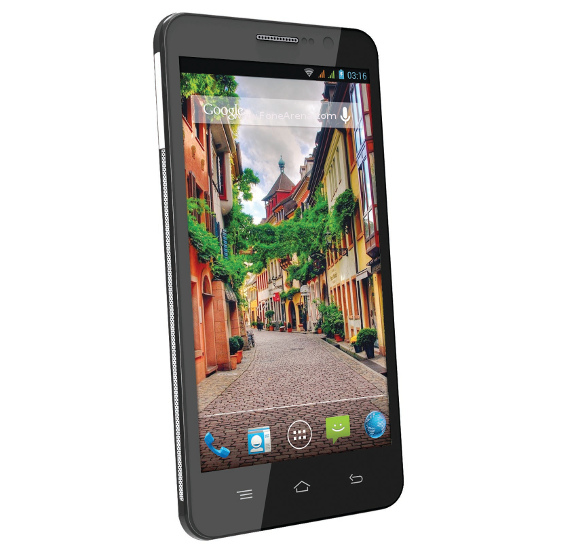
Videocon A55HD Specifications
- 5-inch (1280 x 720 pixels) HD capacitive touch screen display
- 1.2 GHz quad-core processor
- Android 4.2 (Jelly Bean)
- Dual SIM (GSM + GSM)
- 8MP rear camera with LED Flash
- 3.2MP front-facing camera
- 3.5mm audio jack
- 1GB RAM, 4GB internal memory, 32GB expandable memory with MicroSD
- 3G (HSDPA: 42.2 Mbps, HSUPA: 11.5 Mbps), WiFi 802.11 b/g/n, Bluetooth 4.0, GPS
- 2000 mAh battery
Sony announces updated RX1R and RX100 II compact cameras
Last year Sony launched the RX1 and the RX100 cameras, which went on to become some of the best compact cameras money could buy. Now, less than a year from their launch, Sony has announced updated versions of both cameras: the special edition RX1R and the RX100 II.
The RX1R gets a minor improvement over the RX1. The new model gets rid of the optical low-pass filter (OLPF) found on the RX1R whose purpose is to suppress moiré and color artifacts. The removal of the filter helps the camera achieve even greater resolution through the same sensor with sharper images.

The RX100 II, on the other hand, gets a brand new 1-inch, 20.2 megapixel backside illuminated CMOS sensor. Sony claims it is the world’s first 1.0-type back illuminated sensor ever developed and offers 40% more sensitivity in low-light situations compared to the previous generation model. The RX100 II also gets Wi-Fi and is the first Sony camera to include NFC for quickly transferring content to compatible devices, such as smartphones and tablets.
Other additions include a hot shoe for connecting an additional flash, electronic viewfinder or flash and the display is now fully articulating. Lastly, the RX100 II can record videos in 1080p24 mode.
The special edition RX1R is priced at $2,800, same as the RX1 which will continue to be sold. The RX100 II, meanwhile, will replace the RX100 and costs $750.
Windows 8.1 update will have built-in support for 3D printing
microsoft announced that the Windows 8.1 update will have built-in support for 3D printing. Making a 3D object on your PC will be as easy as writing a document in Word and sending it to print. Just as desktop publishing transformed how we write, we think desktop manufacturing will transform how we create. 3D printing has been around for a while but has mainly been used by manufacturing companies – car makers, aerospace companies, toymakers, and hardware companies, including Microsoft, to make prototypes. Using big, very expensive machines, manufacturers build 3D models using a variety of materials, from plastic to metal. Recently, the popularity of 3D printing has exploded among the “maker” community – do-it-yourself hobbyists, inventors and design enthusiasts who make everything from jewelry and clothing to robotics and games. Many experts think 3D printing could help spark a manufacturing renaissance, and some market analysts predict that the global 3D printing market will reach $3.1 billion by 2016.
But will 3D printing go mainstream? We think so – which is why we’ve built it into Windows – the world’s most popular platform. This includes all of the things you’d expect from Windows: plug-n-play support for printers, enabling apps to seamlessly submit 3D print jobs, understanding 3D file formats, and connecting lots of apps with lots of hardware to deliver an end-to-end solution for customers. We want this to be so simple that anyone can set up their own table-top factory.

We don’t think desktop 3D printing will replace mass-production; the economics of making millions of the same object will always be more cost-effective than individual or short-run manufacturing. Instead, people will use 3D printing to make custom creations. Why settle for off-the shelf trophies for your daughter’s soccer team, when you can make unique, personalized awards? Why wait two weeks to order a small plastic part for the salad box of your refrigerator, when you can just print it at home in a few minutes? Broken hinge? Make it. New product idea? Make it.
Easier 3D printing will also revolutionize invention beyond the home. For example, Fast Company recently wrote about Enabled by Design, a nonprofit that is using 3D printing to make customized medical devices to help people with disabilities live independently. Someday, medical printers may even be able print organs needed for life-saving transplants.

We’re excited to have leading partners across the 3D printing industry join us in making this a reality for the masses. What we’ve seen from partners like 3D Systems, Autodesk, Dassault Systèmes, Formlabs, MakerBot, netfabb, Stratasys, Tiertime, Trimble and many others will be very appealing to a broad set of users and, ultimately, create a new ecosystem for Windows customers.
The prices of consumer 3D printers are dropping quickly. Staples announced that it will start selling 3D Systems’ Cube 3D printer for $1,299 at the end of June, and several companies are offering consumer-friendly 3D printers that range from $800 to $3,000. And today we announced that you can purchase the Replicator 2 from MakerBot in our Palo Alto and San Francisco Microsoft Retail stores – with availability in other locations soon. You can also use a 3D printing service like Shapeways or Sculpteo to make something and have it shipped to you or sell it online. And Staples recently announced they will be offering a 3D printing service in Europe.
As Windows 8.1 becomes available later this year, now is the time for software and hardware developers to start planning for this new capability in Windows. We have free tools available to make 3-D printing as easy as clicking File --› Print.

So it’s time to imagine the possibilities. What are you going to make?
Windows 8.1 Preview officially launches, better personalization, Start button comeback
Today at its Build developer conference, Microsoft released the preview of the Windows 8.1 update and it is now available for users to download and try out.
The update brings a lot of changes to Windows 8 in an effort to improve the experience and fix the stuff that people have been complaining about. The major one of them is the removal of the Start button in Windows 8. Happily, it’s back in Windows 8.1 However, there’s no Start menu to go with it, as Microsoft is keeping its new Metro-styled user interface in the new start screen.
The other major update that Windows 8.1 brings is the ability to boot directly to the desktop, rather than the Start Menu. Speaking of the Start Menu, the tiles there now support more sizes: the larger the tile, the more information it holds – just like on Windows Phone 8. Swiping up on the Start Menu unveils all installed applications.
The backgrounds on the Start Menu are now dynamic and allow you to fiddle with them a lot more than before to get them just right according to your taste.
Windows 8.1 also gives you better control over how app windows are snapped and now supports 50/50 split view among the defaults, but will also allow you to define your own percentages for even more control over the personalization. Windows 8 apps now get support for multiple monitor setups, too.
Microsoft has updated some of its core Windows 8 apps and added more features to them. Internet Explorer 11 now supports WebGL, while the Mail app has a more polished user interface that makes it a bit better than before. The same treatment has been given to Xbox Music as well.
Steve Ballmer was proud to state on the stage today that the 3-year update cycle is a thing of the past now. Steve Ballmer reiterated that from now on Microsoft will release updates more swiftly, so the future of Windows is going to be exciting, that’s for sure!
Google Editions HTC One and Samsung Galaxy S4 go on sale
As originally promised, the Google Play editions of the Samsung Galaxy S4 and the HTC One have gone on sale today. Both top-shelf smartphones, running stock Android can be ordered from the Google Play Store in the United States.The Pure Google Samsung Galaxy S4 is priced at $649. HTC One on the other hand, is slightly cheaper at $599. Both devices are offered with free delivery. The scheduled shipping date for either of the two devices is on or before July 9.
The stock Android editions of the HTC One and the Samsung Galaxy S4 are bound to attract their fair share of Google purists, who aren't keen on living with some of the limitations the Nexus 4 has. Considering the difference in the pricing however, it is fair to think that the sales of the Nexus 4 are not likely to take a hit.
Motorola's new logo hints at color options, brands itself "a Google company"


The last tweak is
the label that Motorola is "a Google company". Google and Motorola have
always asserted that the two companies would be kept separate, and
Motorola would be run independently, but this is a clear indication that
Google does have some control over its new hardware company.
Mystery Motorola device leaks in photo, is it the X phone?
The Motorola X phone has been circulating the rumor swirls ever since we first heard of its equally mysterious name. And now that it's alleged unveiling draws even closer, we stumble across an image of what could possibly be it.The image was sent in to PhoneArena and according to their sources this is a Motorola XT1056 caught while in testing for Sprint USA's 4G LTE network. The device was described as either having a 4.5" or 4.6" display, or around that size.

Possibly the Motorola X phone (click for larger image)
We've heard speculations that the Motorola X phone will be a 720p-packing device with an OLED on the front, powered by a 1.7 GHz Snapdragon CPU with 2 gigs of RAM alongside 16 GB of inbuilt storage.
The device in the above image is clearly running Android Jelly Bean (probably 4.2.2) and flaunts truly thin bezels on each side of the screen. There's some kind of sign covered up the right side above the display, but there's no way of knowing what it is or if it's relevant
Windows Phone 8.1 reference found in Windows Phone Store
 |
This manifest file shows that Windows Phone 8.1 is the name of the next build for the platform
|
Last month, we told you that mobile ad network AdDuplex spotted Windows Phone 8.1 being used on the Nokia P4301 test device along with the HTC 8X and the Nokia Lumia 920. Back in March, we saw Microsoft advertising for a test engineer for Windows Phone 9.
Now that we know the the name of the next Windows Phone update, now we need to come up with the launch date. You might recall that early this month, a Nokia Lumia 920 bought from eBay contained parts of the Windows Phone Blue update including an improved calendar, and a new notifications page. Microsoft not only bought back the phone from the buyer, it also gave him a free Nokia Lumia 920. This all adds up to the possibility of a Windows Phone 8.1 update coming as soon as Q3.
Razer releases Surround software for virtual 7.1 surround on stereo headphones
Any gamer knows that the sound in the game matters as much as the visuals. In fact, at times, it matters more, especially when the enemy may not be on the screen but you could still hear them. Normally, people use headphones while gaming but often the level of immersion from just two speakers leaves a lot to be desired and not everyone can afford to purchase a pair of surround sound headphones.
As a solution to this problem, Razer has released a new software for Windows PCs that let you enjoy the benefits of a surround sound headphones from any old pair of stereo headphones. It uses virtual surround sound (which is what most surround sound headphones use anyway) to recreate the experience of listening to a 7.1 channel system through just two speakers.
The software allows users to fine tune the sound to their liking and then the settings are saved not just on your own PC but also on the cloud, so if you happen to log in from another computer your settings are downloaded and synced automatically.
The best part is that the software is completely free to download. Razer, however, also gives you the option to pay if you want to and the money will be donated to Child’s Play charity.
WP8 Samsung ATIV S Neo and HTC 8XT for Sprint announced
Two new Windows Phone 8 offerings will be making their way stateside on Sprint's 4G LTE network this summer.
The first is the HTC 8XT, toting a 4.3-inch display of WVGA resolution as well as a Snapdragon 400 chipset with a 1.4 GHz dual-core Krait CPU. The RAM is 1GB, while internal memory is only 8 GB but can be expanded by up to 64GB thanks to the microSD card slot. The HTC 8XT will draw its juice from a 1800 mAh battery.
Samsung's ATIV S Neo, like the regular ATIV S, will offer a larger 4.8-inch display of 720p resolution (we're not sure if it'll be of the AMOLED variety, however), a dual-core 1.4 GHz processor, 1 GB of RAM and a 2000 mAh battery. There's also mention of the ATIV S's NFC connectivity and 1.9 MP front-facing camera.
Sprint is keeping mum on a more specific release date, saying only "this summer," but on contract pricing has been listed at $99 for the HTC 8XT (after $50 rebate), and $149 for the Samsung ATIV S Neo (after $50 rebate).
Alcatel announces the ONE TOUCH FIRE, Firefox OS device to launch this summer

The Alcatel ONE TOUCH FIRE is an entry level smartphone, built on the popular browser based OS and designed to thrive in the open-source HTML5 environment. Alcatel touts the ONE TOUCH FIRE will be ready to go out of the box.
The ONE TOUCH FIRE will feature a 3.5-inch 320x480 display, an MSM 7227 1GHz CPU, a 3.2MP main camera (no flash) and will be available in a variety of colors, like Mozilla Orange, Apple Green or Pure White. The ONE TOUCH FIRE can capture 30fps video at VGA quality and features a music player and FM radio. It is a 3G device supporting GSM/UMTS in the common bands (850/900/1800/1900/2100) and will support microSD cards up to 32GB.
For a small sized device, the battery is 1,400mAh which Alcatel claims up to 6.7 hours of talk-time on 2G, about half that on 3G. While not earth-shattering specs in any direction, the ONE TOUCH FIRE is sure to be appealing in emerging markets in Central and South America and will certainly be an endearing option for those on a budget in Europe.
As with many product announcements, we do not have any pricing or release dates, nor did Alcatel announce which markets would get the ONE TOUCH FIRE first. The company already has an established line-up of Android powered smartphones and the manufacturer was one of the first to announce its support of build equipment using the new Firefox mobile operating system.
evleaks: Nokia EOS to be officially named Lumia 1020
The Nokia EOS, the company's upcoming Windows Phone-running cameraphone flagship is going to be called the Lumia 1020, according to evleaks. More often than not, the famous Twitter user is right in its predictions, so there's good reason we trust the latest Tweet, stating just "EOS = Nokia Lumia 1020".
While it was believed for a while that Nokia may come up with a brand new name for its camera-centric Windows Phone 8 smartphone, something in the lines of "EOS", it seems the Finns have decided to stick to their familiar naming scheme. Considering the series of leaks we've had of the smartphone and its resemblance to the Lumia 920, it's logical for the company to go a step further and give the EOS an official name - the Lumia 1020.
Nokia has confirmed in its latest teaser image that the Nokia
Sony Xperia Z Ultra goes official: a 6.4" Snapdragon 800
Sony has just made its Xperia Z Ultra phablet official. Previously known by its codename Togari, the device features a 6.4" monstrous screen and a Snapdragon 800 chipset, which is the fastest ARM chip put in a smartphone to date.The Sony Xperia Z Ultra Triluminous screen has 1080p resolution, giving it a nicely sounding 344ppi pixel density. It uses Sony's OptiContrast and X-Reality tech, which it's the successor of the Mobile BRAVIA tech. Sony is boasting that the 6.4" display gives users 60% more surface to work with compared to other phones (5" phones presumably).




Sony Xperia Z Ultra official images
You can use a regular pencil or pen as a stylus as well as a capacitive stylus.
There's a powerful Adreno 330 GPU to push all the pixels to the screen too, a part of the new Snapdragon 800 chipset, which also packs a quad-core Krait 400 processor clocked at 2.2GHz. That makes the Sony Xperia Z Ultra the first device to go official with the 800 chipset and it will surely be quite the benchmark champion when it comes up.
The new chipset runs Android 4.2.2 with a revamped Sony software to make good use of both the extra available power and screen real estate.
More images of the Xperia Z Ultra
The camera on the back of the Sony Xperia Z Ultra phablet has an 8MP Exmor-RS sensor that can record 1080p video and supports HDR for both stills and movies. There's no LED flash though.
The Sony Z Ultra uses the same OmniBalance design as the Xperia Z, including the tempered glass back, but adds a metal frame along the sides and at 6.5mm it's even slimmer than the hot-looking smartphone. It's water-resistant too with a IP58 certification, same as the Xperia ZR. Unlike the IP57 of the Xperia Z, this certification allows the Xperia Z Ultra to dive deeper than 1m and stay there for longer.
The Ultra packs 4G LTE connectivity, HD Voice along with NFC. There's also Sony's proprietary WALKMAN player with ClearAudio+ and xLOUD enhancements.

The Z family: Xperia Tablet Z, Xperia Z Ultra, Xperia Z
Sony is advertising it as the world's slimmest 1080p phone - it measures only 6.5mm thick. That screen size and 3,000 mAh battery come at a price though, 212g of weight in this case.
The Sony Xperia Z Ultra is expected to launch in Q3 this year in three color versions - white, black and purple.
Sony announces Xperia SP M35t and Xperia C S39h for China
TD-LTE-enabled variant of the Xperia SP for the Chinese market, and the Xperia C S39h, a dual-SIM qHD 5-incher, which is also Sony's first mobile powered by a quad-core MediaTek SoC.The Somy Xperia SP M35t will be the same as the original, save for the TD-LTE antenna which lets it work with China Mobile's 4G network. It'll have the same 4.6-inch 720p display and customizable transparent LED strip which stretches at the bottom of the device, alongside a dual-core 1.7 GHz Krait on a Snapdragon S4 Pro chipset and an 8 MP camera.

The Sony Xperia C S39h will be a China Unicom exclusive and features a 5-inch display of qHD resolution (960 x 540 pixels), a quad-core 1.2 GHz MediaTek processor, and an 8 MP camera with Exmor R sensor. It'll come with dual-SIM support, and will be available in White, Black and Purple on release.

Sony announces the IP57-certified SmartWatch 2 with NFC
Sony officially announced the SmartWatch 2, its third-gen watch accessory that pairs with your Android smartphone.
The new SmartWatch 2 sports a new design inspired by the Xperia Z and even sports the smartphone's cool-looking aluminum power button. Just as before, the watch connects with any Android smartphone or tablet via Blueetoth and can show text messages and incoming calls as well as give you Facebook and Twitter updates, show calendar entries and act as a remote for the music player.




Sony claims that the SmartWatch 2 is significantly faster than its predecessor and is also resistant to water splashes with IP57 certification. There are a few hundred apps specifically designed for the experience that the SmartWatch 2 provides, according to Sony.




Sony SmartWatch 2 official photos
Sporting an aluminum body and stainless steel wristband, the watch features NFC connectivity for easy pairing and connecting and microUSB port for charging. It has a 1.6" display with a resolution of 220 x 176 pixels, which Sony says is very good for reading and offers great sunlight legibility.
Fujifilm announces X-M1 interchangeable-lens camera
Fujifilm has launched the new X-M1 interchangeable-lens camera, the third of its kind from the company and the cheapest one so far. It has the retro-style design of some of Fujifilm’s other models and as you can see below it looks utterly fantastic.
The X-M1 uses the same 16.3 megapixel APS-C X-Trans CMOS Sensor as the X-Pro1 and X-E1 cameras with a 49 point auto-focus system, which Fujifilm claims offers quality comparable to full-frame sensors. The sensor is capable of shooting at ISO6400, which can be further extended to ISO25600.
The X-M1 comes with two command dials, one on the top and one on the back, that let you adjust various parameters, such as aperture, shutter speed and exposure compensation. On the back is an articulated, 3.0-inch 920k dot LCD but the camera lacks an optical viewfinder. On the top is the flash and the hot shoe for accessories. The X-M1 also comes with built-in Wi-Fi connectivity for wirelessly transferring your images to a computer, smartphone or tablet using the respective companion apps.
Lastly, you can also record 1920 x 1080 video at 30 frames per second.
The Fujifilm X-M1 is priced at $699 (body-only) and $799 with the 16-50mm lens.
HP officially announces the Slate 21 AIO Android tablet with Tegra 4 chipset

The desktop/tablet combo runs on a fast Tegra 4
chipset, and sports Android 4.2 out of the box, with a kickstand on the
back when you want to use it in its desktop reincarnation - at 21.5" we
assume this will be most of the time, but board games around the
bonfire aren't out of the question either with this thing.
Slate 21 was unveiled in Beijing, so the press release below is a rough translation from Chinese, but seemingly the IPS display is with 1920x1080 Full HD resolution,
and DTS surround sound speakers are present. HP says there will be more
details on the exact specs and pricing when the Slate 21 hybrid gets
introduced at each country, but at least we are sure that Microsoft's
licensing fee for Windows RT won't be in the price, which should already
mean a more affordable device for those who might need it.
Sony Xperia Z with Snapdragon 800 coming up?
The Sony Xperia Z with a Qualcomm Snapdragon 800 chipset exists and is actively been tested by the company, according to Eldar Murtazin, who claims he has seen and played with the device himself.
Murtazin, who has a somewhat mixed success with his predictions and leaks as of recently, also reports that the prototype he has tested sports a similar display to the HTC One's Super LCD 3. However, he doesn't believe Sony will leave it in the final version of the device, provided it exists.
Vertu announces limited edition TI devices, only 1,000 of each will be made
 |
The red and blue are a departure from the current line of black options featuring specific accents of alligator or gold. These luxury handsets are not spec-monsters by any standard nowadays. The appeal of a Vertu beyond its exclusive hardware is the concierge service that is available to accommodate every whim and wish of the owner 24/7.
For those that need to know though, the Ti features a 3.7-inch 800x480 display with a sapphire crystal instead of glass. There is an 8MP autofocus camera, and 64GB of storage on board. The Ti is a quad-band GSM smartphone with HSPA+ data up to 42Mbps, Bluetooth 4.0 LE and NFC. Powering the whole thing is a dual-core Qualcomm Snapdragon CPU tuned to 1.7GHz and Android 4.0 Ice Cream Sandwich.
To become an owner of one of these exclusive limited edition Ti devices, just find a dealer and be ready to pay about €8,900 ($11,700) for the privilege of owning one. The concierge service starts at about a couple thousand per year. Big spenders get their own dedicated concierge agent.
Intel snubs Qi, goes with Alliance for Wireless Power

Intel likes the direction that the A4WP is taking toward near-field magnetic resonance technology which allows devices to be charged without touching a pad. Intel wants to further develop Wireless Charging Technology to allow a smartphone or tablet to automatically recharge when placed close to a laptop.
"Intel
believes the A4WP specification, particularly the use of near-field
magnetic resonance technology, can provide a compelling consumer
experience and enable new usage models that make device charging almost
automatic. In joining A4WP, we look forward to working alongside other
member companies and contributing to standards that help fuel an
ecosystem of innovative solutions capable of simultaneously charging a
range of devices, from low-power accessories to smartphones, tablets and
Ultrabooks."-Intel
LG Optimus G2 screenshots show onscreen keys
A trio of leaked screenshots that allegedly come from the LG Optimus G2 have appeared revealing a bit of what LG has been cooking for its upcoming Android flagship smartphone.The images in question show that the company hasn't altered the look of the Optimus UI too much, but has rather given it a few refreshing touches here and there. What the screenshots do reveal though, is the resolution of the Optimus G2. The smartphone's 5" screen is now confirmed to have full HD resolution .
Here are the screenshots themselves. Notice the onscreen software buttons, suggesting that LG has chosen to leave out the physical buttons for its upcoming flagship. This would also make it easier for LG to make the rumored Nexus 5.



Alleged LG Opitmus G2 screenshots show the new Optimus UI
Purported photo of the LG Opitmus G2 has already given us a glimpse of how the smartphone would look. Qualcomm and LG have also confirmed the smartphone will be powered by the Snapdragon 800 chipset



































